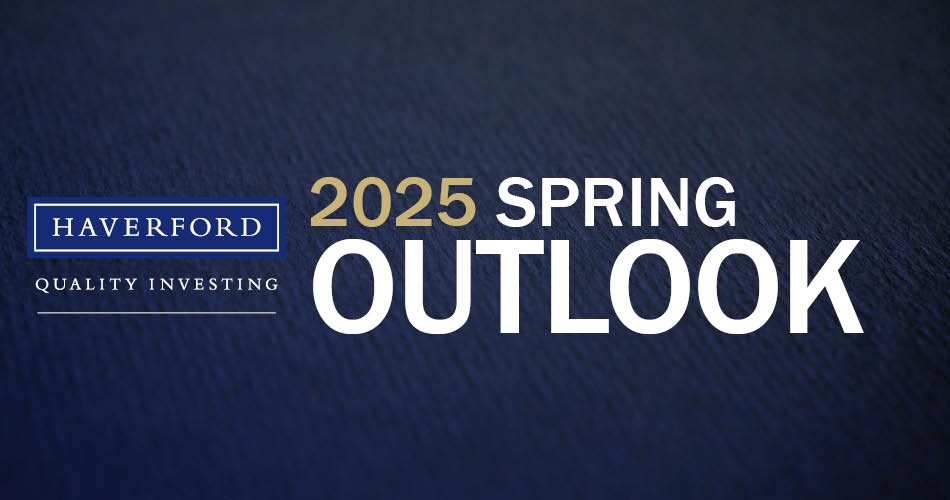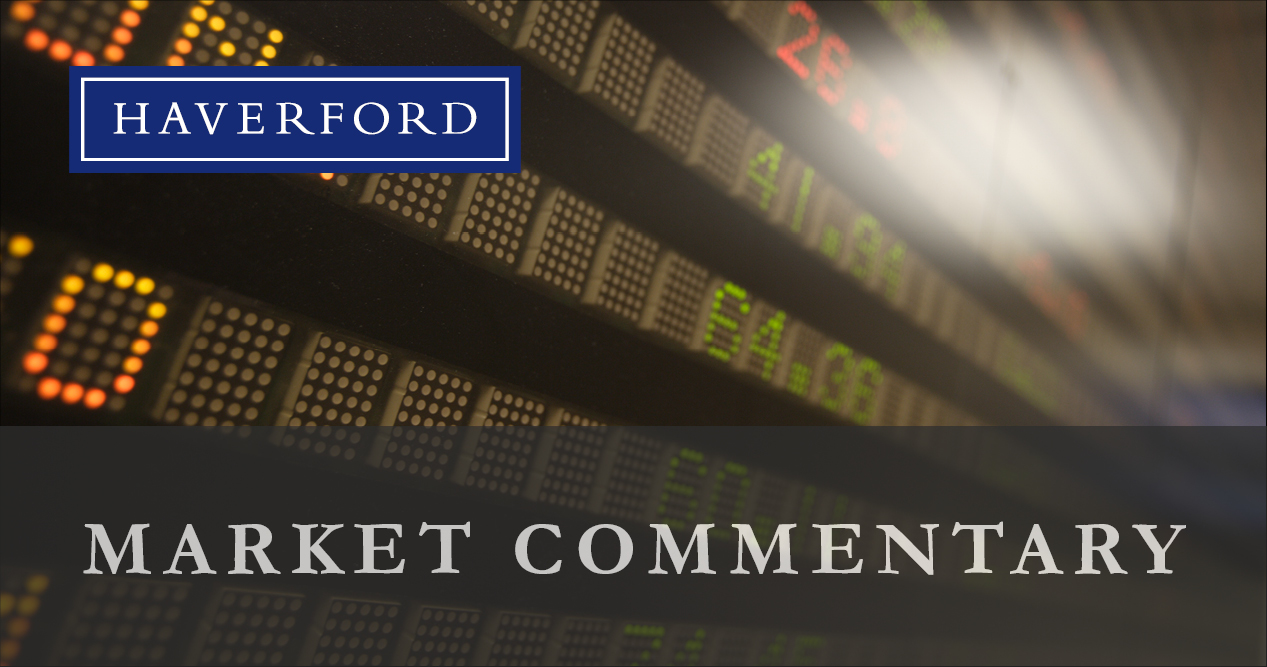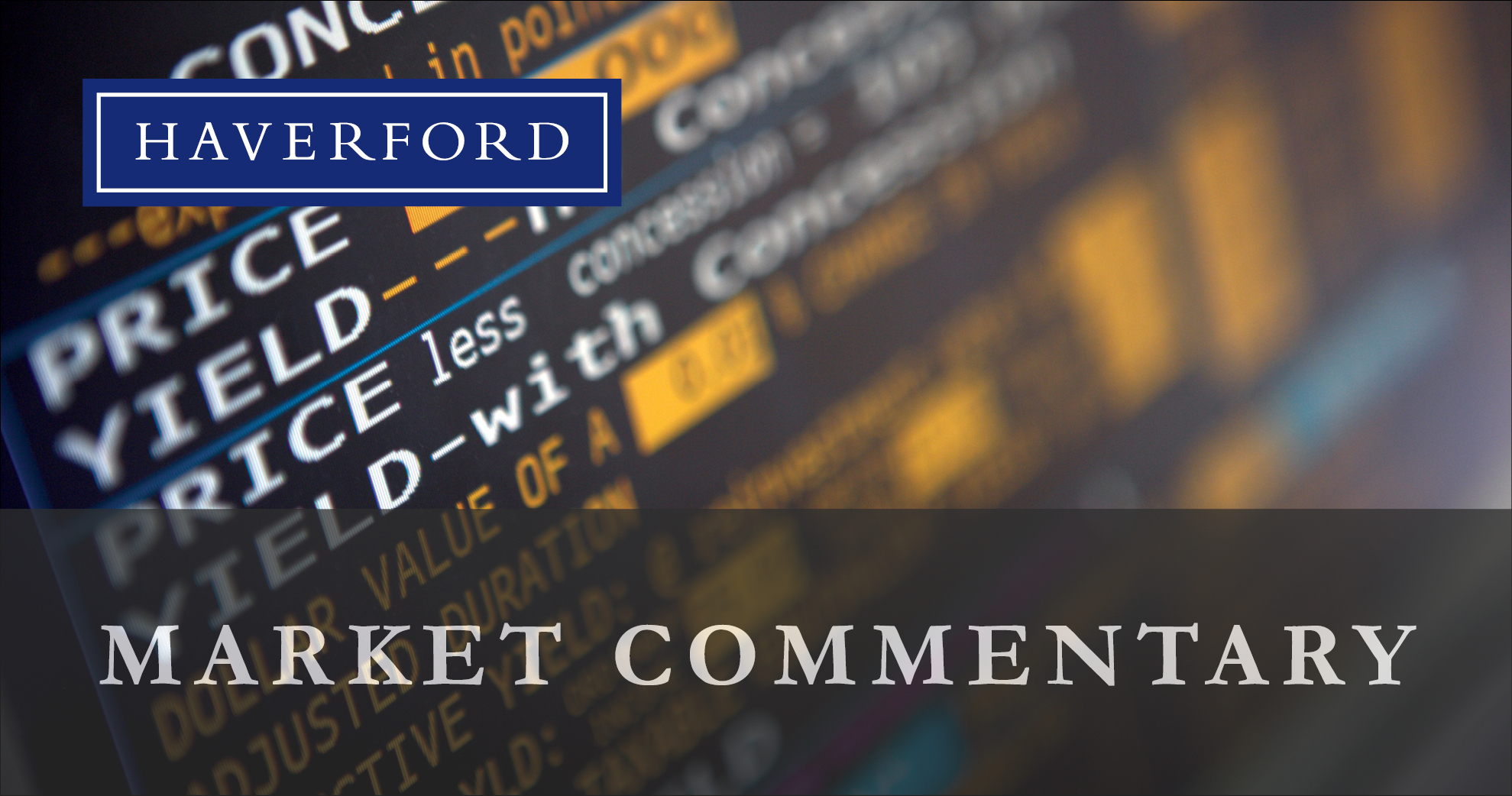In 2017, Trump Administration 1.0 policy commenced with bullish regulatory roll-back and tax reform, followed by tariff implementation. The first months of Trump 2.0 have been focused on tariff policies that are causing investors and economists alike to lose faith in the markets and the economy. We’ve been asked to eat all our spinach with only the distant promise of dessert.
Tariffs are taxes, and while some taxes are a necessary evil, the ferocity with which the administration is trying to upend the economic order of the past 80 years is proving to be unnerving to businesses and investors. The President’s April 2nd announcement is the largest tax increase and potentially the single most disruptive government policy ever. It is far and away larger than most expected.
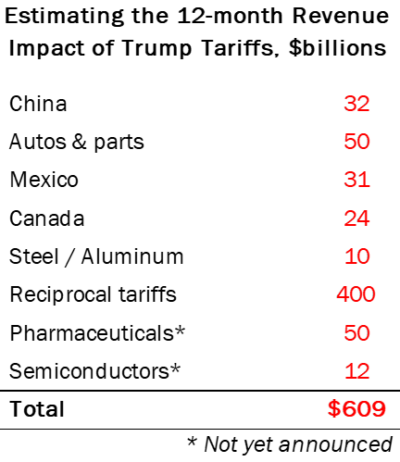
Estimating revenue from Trump Tariffs
Source: Strategas & Haverford
Current estimates place the full cost of tariffs announced and expected at over $600 billion annually. The size of this economic dislocation will prove to be a massive impediment to the economy unless offsets of lower taxes and regulatory burden come quickly. If fully implemented, tariffs could reduce 2025 GDP growth by 1.0%, while the impact on inflation could delay rate cuts from the Federal Reserve. Tariffs alone could reduce S&P 500 earnings 8% from current levels, negating any growth that was previously expected this year.
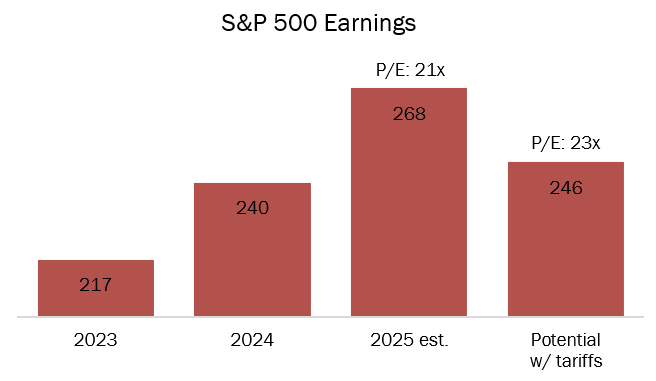
S&P 500 Earnings
Source: Haverford
Taxes are used all the time to try to influence behavior, and these tariffs are no different. However, aside from the absolute number, there was no visible carrot accompanying the stick. Investors are expected to take on faith that regulatory and tax reform will offset these costs. It is likely the republicans will try to use these tariff revenue estimates as an offset in the budget reconciliation process later this summer, and may be used to pay for no taxes on tips, social security, or incomes under $150,000. Changes to the corporate tax code to include pro-growth subsidies such as immediate depreciation of all construction spending could encourage companies to onshore their manufacturing to avoid the costs of tariffs.
Tariffs have thrown a wet blanket on the markets and may possibly give the economy pneumonia. Sentiment indicators have turned sharply negative and the odds of a recession have increased. However, actions speak louder than words and the job market, corporate earnings, and the credit market thus far continue to demonstrate a more positive view of the economy.
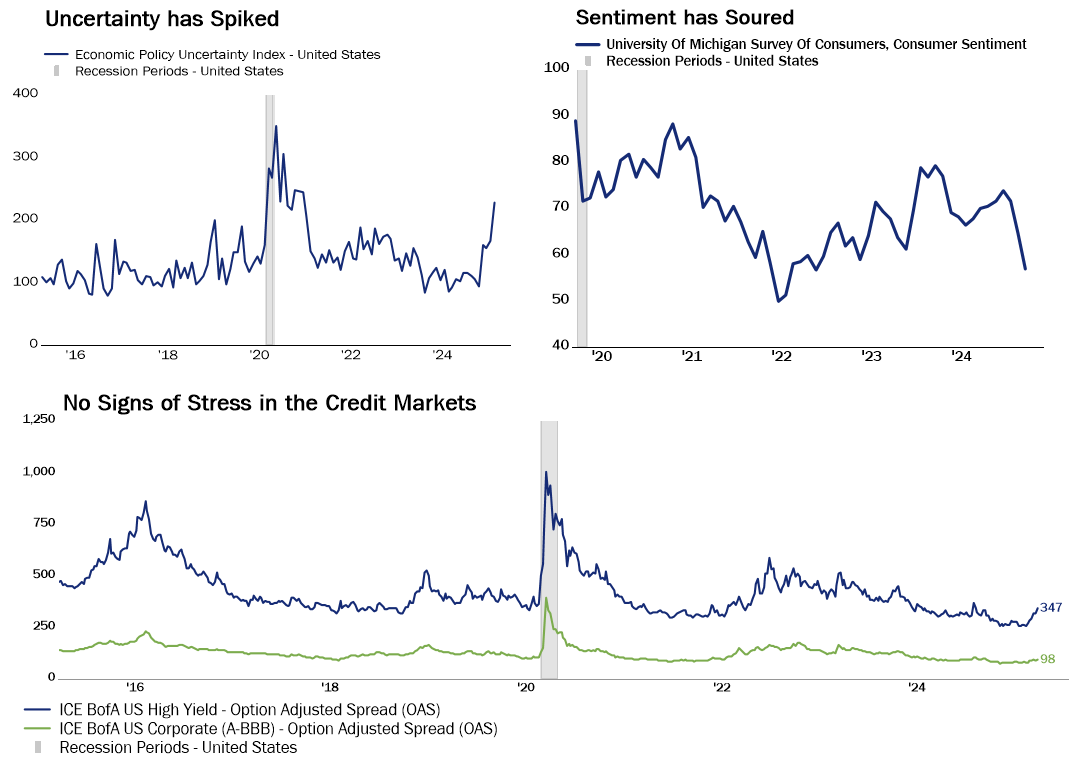
Uncertainty, Sentiment, Credit Markets
Source: FactSet, as of March 31, 2025
During the 1st quarter, restless investors sparked a rotation in market leadership with foreign stocks and bonds posting gains while the Magnificent 7[1] suffered a bear market in returns. The S&P 500 is off about 10% from its highs and closed the quarter down 5%. Declines have been concentrated in stocks with the best trailing performance and earnings multiples priced to perfection. The average stock in the S&P 500 entered 2025 unencumbered by lofty expectations and high multiples and was down only 2% to start the year. We anticipate these trends to continue in the year. We also expect to see Haverford’s Quality approach outshine the gloomy market landscape. Our focus on quality and dividend factors should dampen volatility and provide downside protection.
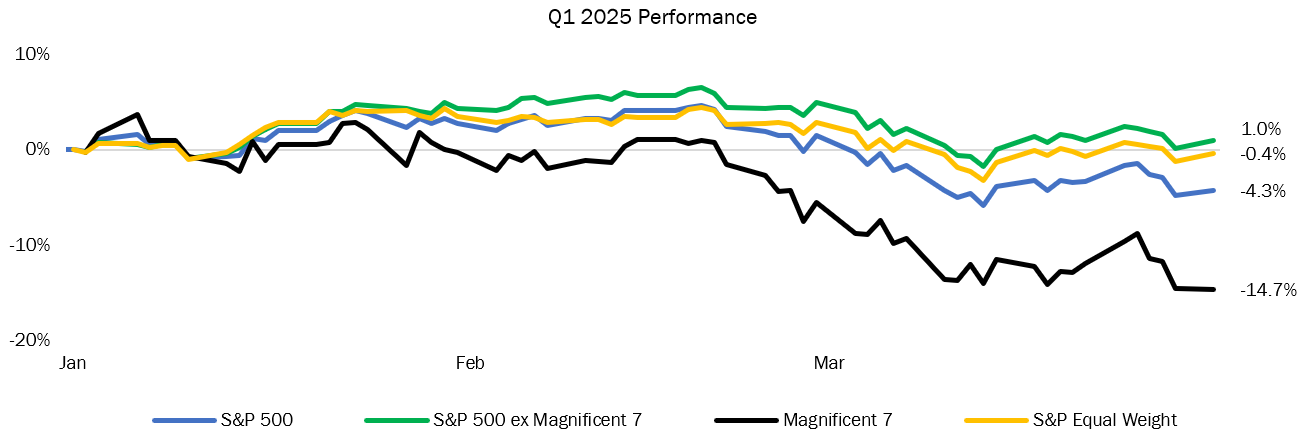
Q1 2025 Performance
Source: FactSet, as of March 31, 2025. Past performance is not a guarantee of future results. The S&P 500 index is a market capitalization weighted index of large cap stocks. For illustrative purposes only. Indices are unmanaged, do not incur fees or expenses and cannot be invested in directly.

Average S&P 500 Returns Following Spikes in U.S. Policy Uncertainty
Source: Factset, Feb 28, 2025. The US Economic Policy Uncertainty Index measures the frequency of articles in major newspapers that contain terms related to the economy, policy, and uncertainty, the number of federal tax codes set to expire, and the dispersion in economic forecasts in the Federal Reserve Bank of Philadelphia Survey of Professional Forecasters. The index is used to track uncertainty over time. Higher values of the index indicate greater uncertainty, which can affect investment, employment, and overall economic performance.
So far, the Trump administration has taken a more aggressive approach than expected. If these policies continue unabated, it will be difficult to avoid an economic recession. There is still the possibility that these tariffs are a negotiating tactic and bluff. If so, the President is playing a very dangerous hand of poker. Adding to the economic headwinds, if DOGE successfully reduces government spending it will likely result in slower economic growth as government deficit spending is economic stimulus.
Additionally, the trend toward the Federal government pushing spending down to state and local governments has accelerated. This has long-term implications for the relative value of municipal bonds compared to other sectors of the bond market. We wish the administration would spend more time focused on making doing business in America easier, attracting business with the carrot of a pro-business regulatory and legal regime, not with the tariff stick.
Despite the statements made by this administration yesterday and the announcement of specific tariffs, a lot of ‘what ifs’ still remain. At times of extreme uncertainty, the human reaction repeatedly is to search for all possible answers. It’s often more practical to focus on items we can control. We work with our clients to set and stay true to their financial plan and asset allocation target.
Keeping this sage advice in mind, remember that in past periods of high policy uncertainty, on average, markets posted positive returns 12 months later.[2] While growth expectations have been lowered, a recession is not a foregone conclusion. Despite anticipation of higher-than-normal volatility, at Haverford we will stay true to our investment discipline in an effort to mitigate risk, and remain steadfast in focusing on each individual investor’s goals to help minimize discomfort.
Media Inquiries
Veronica Mckee, CMP
Direct Phone: 610.995.8758
Email: vmckee@haverfordquality.com
Katie Karsh
Direct Phone: 610.755.8682
Email: katie@gobraithwaite.com
Disclosure
These comments are provided as a general market overview and should not be relied upon as a forecast, research or investment advice, and is not a recommendation, offer, or solicitation to buy or sell any securities or to adopt any investment strategy. Opinions expressed are as of the date noted and may change at any time. The information and opinions are derived from proprietary and non-proprietary sources deemed by Haverford to be reliable, but are not necessarily all-inclusive and are not guaranteed as to accuracy. Index returns are presented for informational purposes only. Indices are unmanaged, do not incur fees or expenses, and cannot be invested in directly.
Investments in Securities are Not FDIC Insured · Not Bank Guaranteed · May Lose Value

